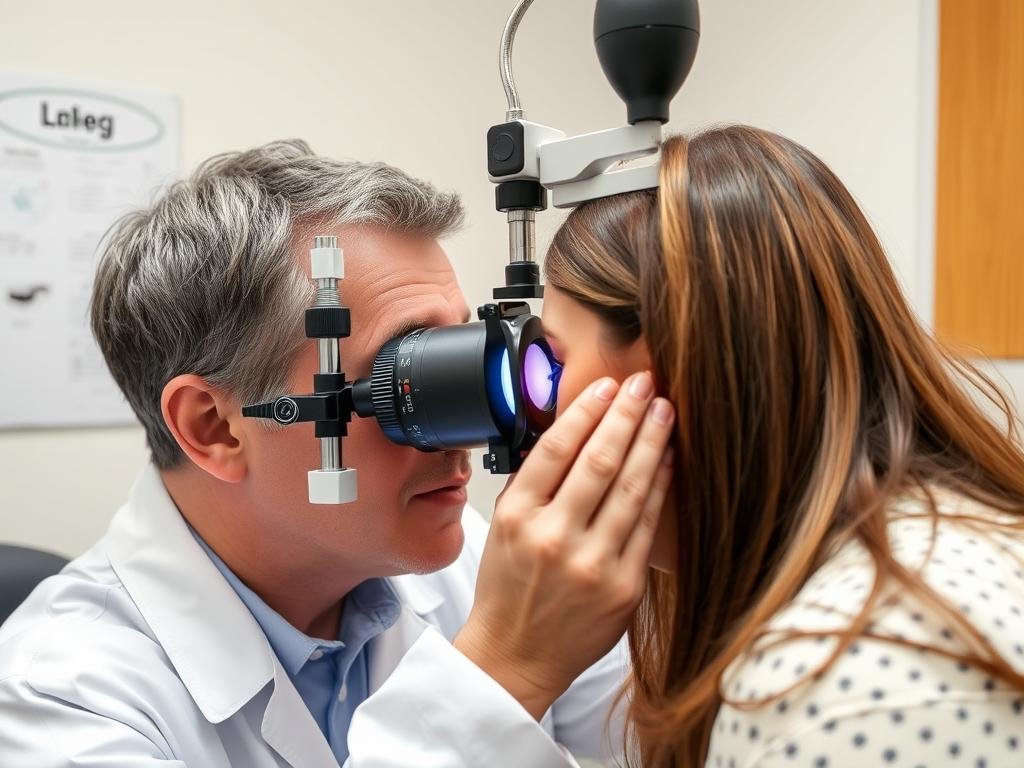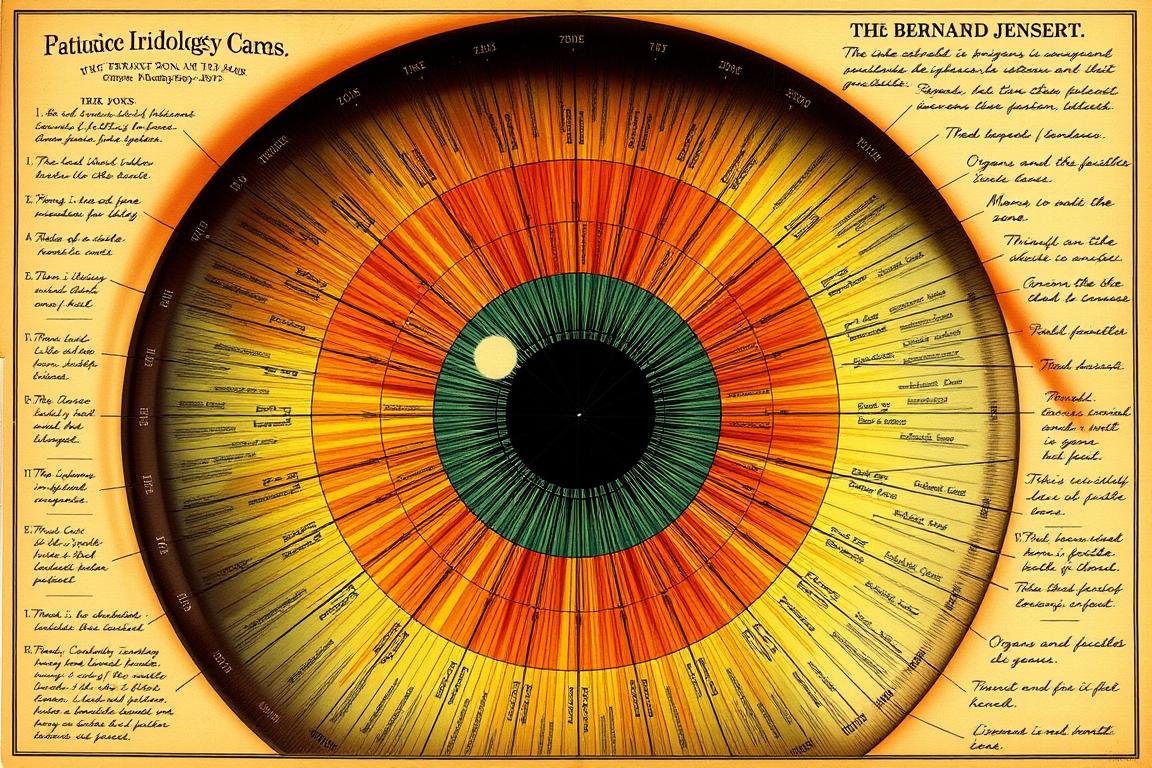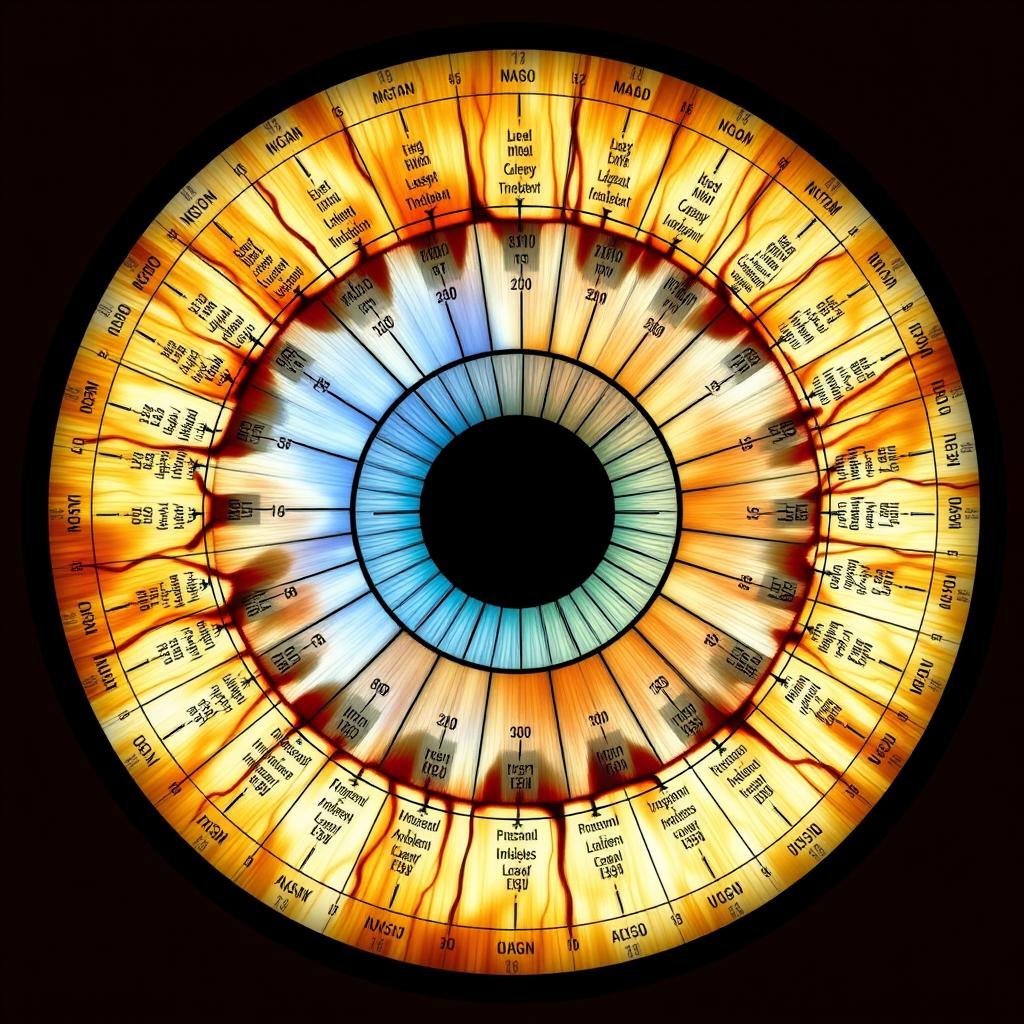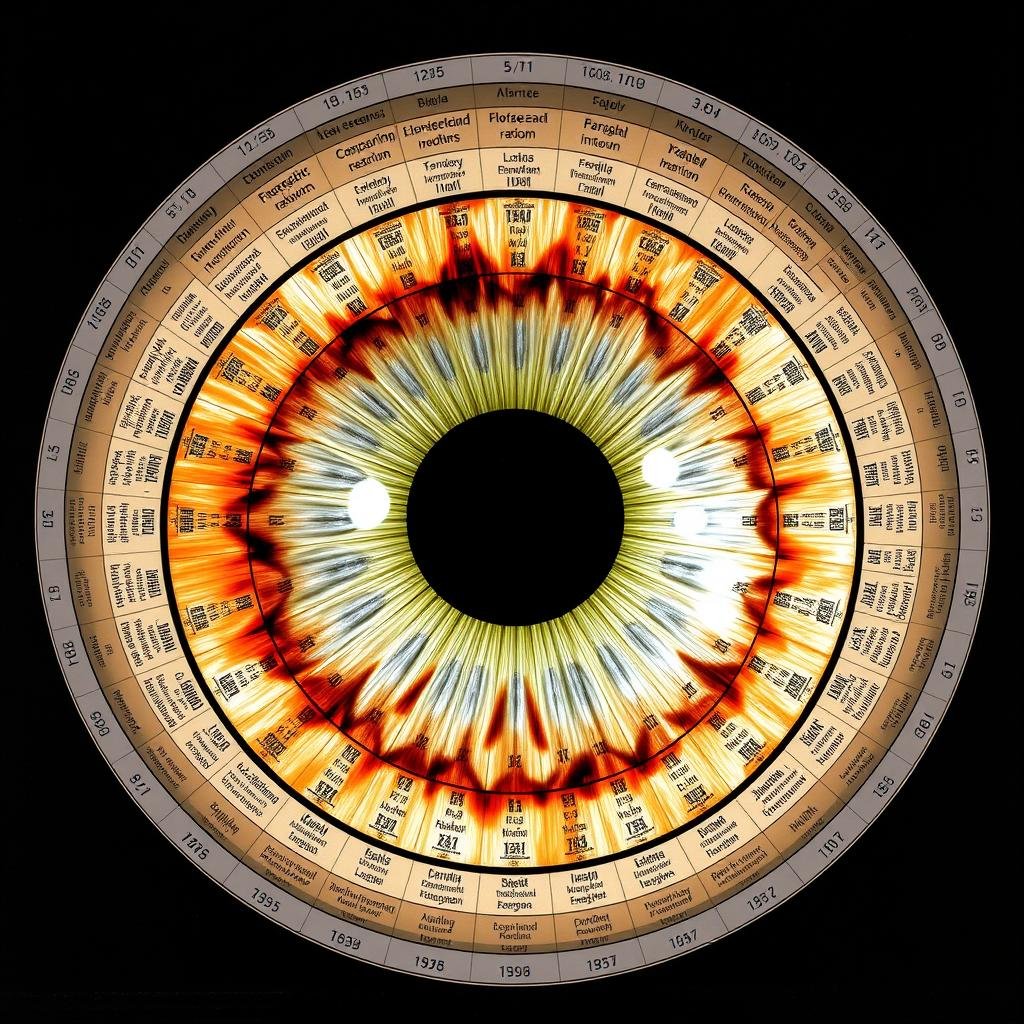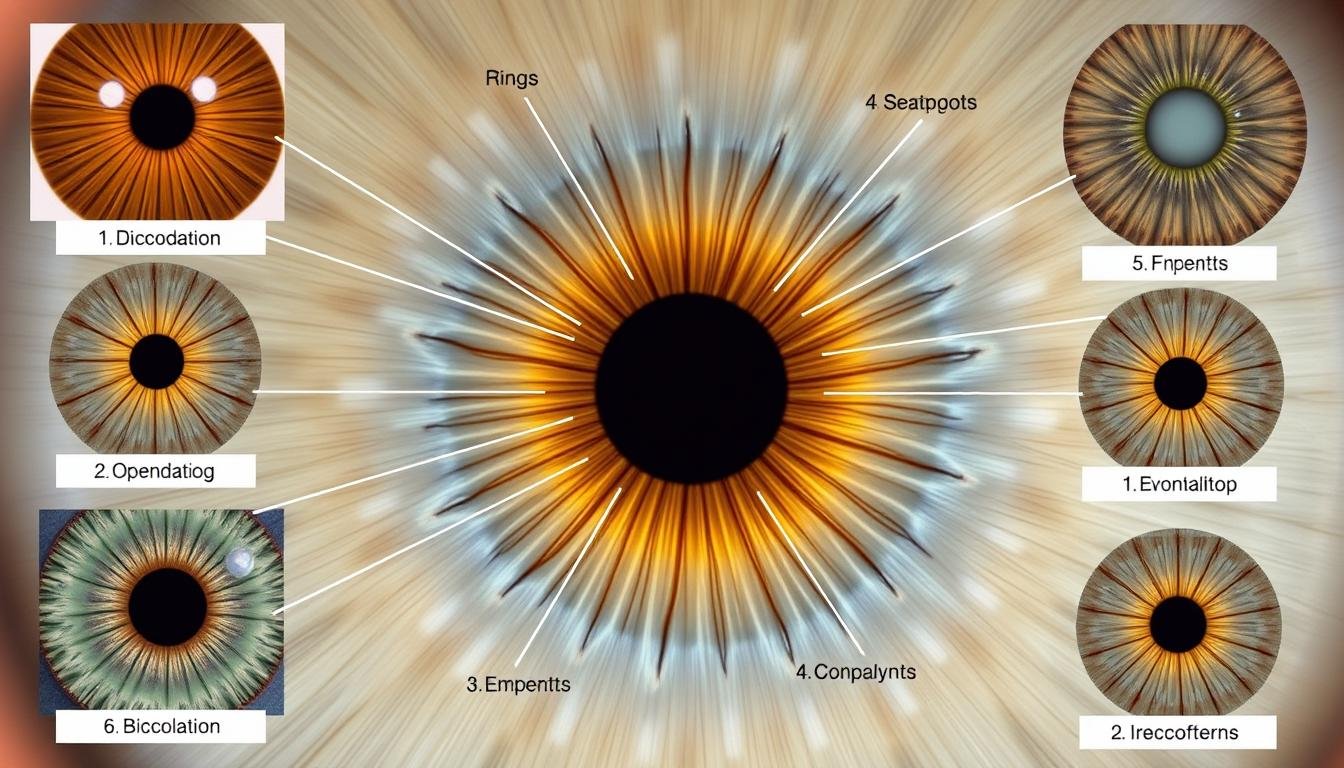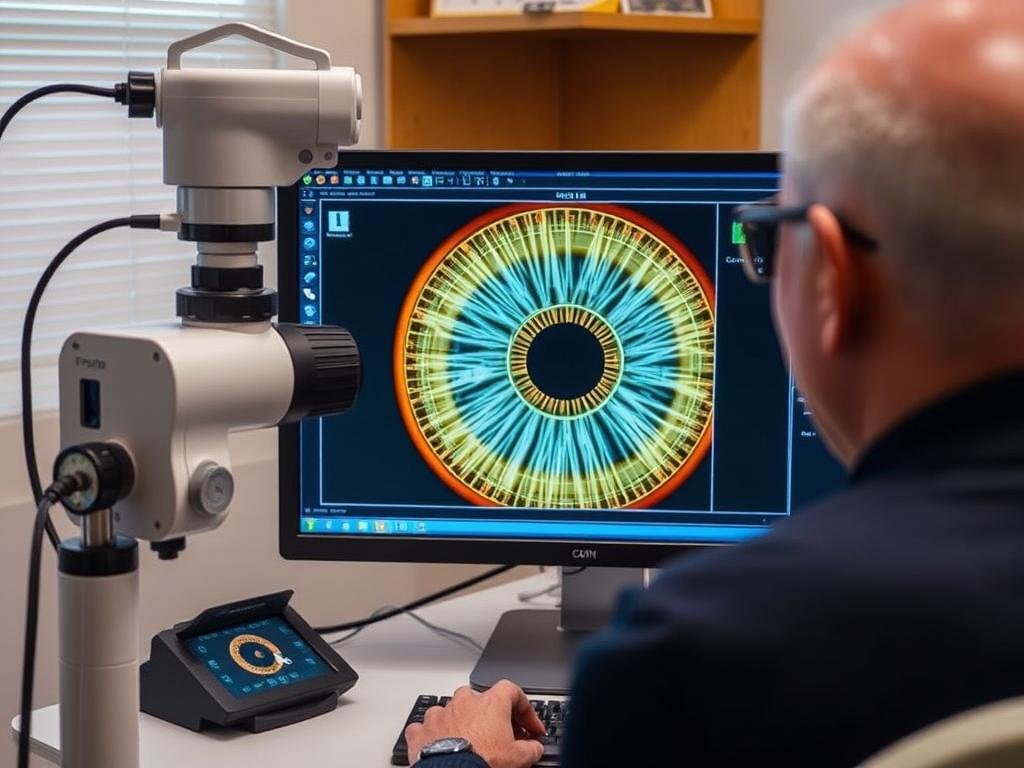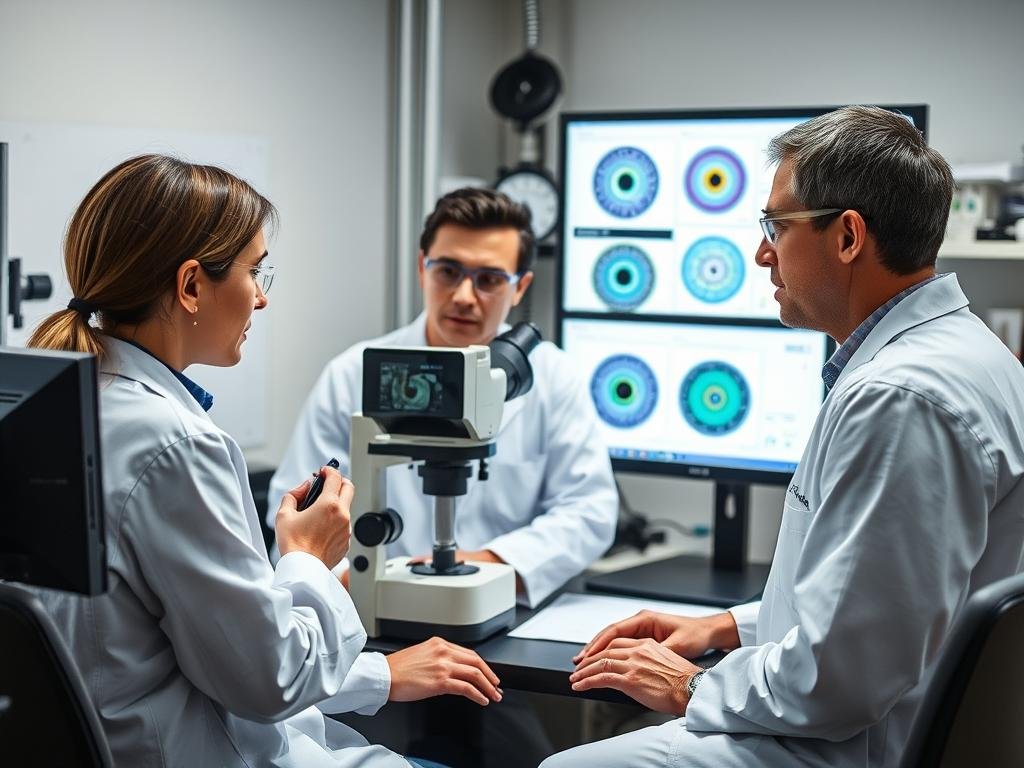The iris, that colorful part of your eye, may hold more information about your health than you realize. Iridológia is the study of the iris patterns, colors, and characteristics to identify potential health conditions and constitutional strengths or weaknesses. This ancient practice uses detailed charts and maps to correlate specific zones of the iris with different organs and systems in the body. Whether you’re curious about alternative health assessments or seeking to understand what those marks in your eyes might mean, this comprehensive guide will walk you through the fascinating world of iridológia charts and their applications.


A comprehensive iridology chart mapping iris zones to body systems
What Is Iridológia?
Iridológia is a form of analysis that studies patterns, colors, and other characteristics of the iris to determine information about a person’s systemic health. Practitioners of this alternative method believe that each organ in the human body corresponds to a specific area in the iris. When examining these areas, an iridologist looks for signs that may indicate inflammation, toxin buildup, or other issues in the corresponding body parts.
The practice is based on the concept that the iris is connected to every organ and tissue via the nervous system and displays changes in its structure and pigmentation when abnormalities occur in the body. While conventional medicine doesn’t recognize iridológia as a diagnostic tool, many holistic health practitioners use it as part of their assessment process.

An iridologist examining a patient’s iris using specialized equipment
História Iridológia
Korene z iridológia can be traced back thousands of years, with some evidence suggesting that aspects of iris analysis were practiced in ancient Egypt, China, and India. However, modern iridológia ako ju poznáme dnes, sa začala formovať v 19. storočí.
Pioneers of Modern Iridológia
The birth of contemporary iridológia is often attributed to Ignaz von Peczely, a Hungarian physician. As the story goes, when von Peczely was a child, he accidentally broke an owl’s leg and noticed a dark mark appear in the owl’s iris. Later, as the owl’s leg healed, he observed that the mark changed in appearance. This observation led him to develop the first iris chart in 1881, mapping connections between iris markings and various organs.
Around the same time, a Swedish homeopath named Nils Liljequist independently developed similar theories after noticing changes in his own iris following medical treatments. In the early 20th century, American practitioners like Henry Edward Lane and Bernard Jensen further developed and popularized iridológia in the United States, creating more detailed iris charts that are still used today.



Historical iridology chart developed by Dr. Bernard Jensen in the mid-20th century
Types of Iridológia Charts
Over the years, several different iridológia chart systems have been developed, each with its own approach to mapping the iris. Understanding these different chart types can help you appreciate the various schools of thought within the practice.
Rebríčka Jensen
Developed by Dr. Bernard Jensen, this is one of the most widely used charts in the United States. It divides the iris into 12 clock-like sectors with multiple rings, creating a detailed map that correlates specific areas to organs and body systems.
Európska/Nemecká tabuľka
The European approach, particularly the German methodology, tends to be more detailed and specific in its organ correlations. These charts often include more subdivisions and may emphasize constitutional assessment over specific organ diagnosis.
Constitutional Chart
Constitutional charts focus less on specific organs and more on overall health tendencies. They analyze the fiber structure, density, and other characteristics of the iris to determine a person’s inherent strengths and weaknesses.
Comparing Iridológia Chart Systems
| Chart Type | Primárne zameranie | Number of Zones | Special Features | Best Used For |
| Rebríčka Jensen | Organ-specific correlations | Approximately 60 | Clock-like sectors with concentric rings | Identifying specific organ weaknesses |
| European/German | Detailed tissue analysis | 80+ | More refined subdivision of organ systems | Komplexné posúdenie zdravotného stavu |
| Constitutional | Inherent tendencies | Varies | Analyzes iris fiber structure and density | Determining genetic predispositions |
| Šialený model | Psychological patterns | 4 main patterns | Links iris structures to personality traits | Emotional and psychological insights |
How to Read an Iridológia Map
Understanding how to interpret an iridológia map requires knowledge of both the chart system being used and the various signs and markings that can appear in the iris. Here’s a basic overview of how practitioners read these maps:


Spoločné označenia dúhovky a ich interpretácie v iridológii
Basic Principles of Iridológia Map Reading
The first step in reading an iridológia map is understanding the basic layout. Most charts divide the iris into zones that correspond to different body systems and organs:
- The right iris generally corresponds to the right side of the body
- The left iris generally corresponds to the left side of the body
- The top of the iris typically relates to the head and brain
- The bottom of the iris usually corresponds to the digestive and elimination systems
- The inner ring near the pupil often relates to the digestive tract
- The outer edge typically corresponds to the skin, muscles, and circulation
When examining the iris, practitioners look for various signs and markings, including:
- Colors and pigmentation: Different colors can indicate various conditions or tendencies
- Fiber structure: The pattern and density of iris fibers reveal constitutional strength
- Medzera: These are enclosed dark areas that may indicate inherent weaknesses
- Slnečné žiarenie: These spoke-like lines may suggest toxin elimination routes
- Prstene: Circular formations that can indicate various conditions
- Spots and flecks: May indicate accumulations or deposits in tissues

Modern iridology examination using digital imaging technology
Common Iris Signs and Their Meanings
| Znamenie Iris | Vzhľad | Potenciálna indikácia |
| Nervové krúžky | Circular rings that appear like ripples in the iris | Stress, nervous tension, or anxiety |
| Lymfatický ruženec | White dots forming a ring around the outer iris | Preťaženie lymfatického systému |
| Lesk | Dark ring at the outer edge of the iris | Skin elimination issues, toxin buildup |
| Medzera | Enclosed darker areas within the iris | Inherent weakness in the corresponding organ |
| Slnečný polomer | Spoke-like lines radiating outward | Toxin elimination pathways, often from the intestines |
| Psorické škvrny | Small, distinct flecks of color | Inflammation or irritation in specific organs |

Close-up view of various iris signs including nerve rings and lacunae
Benefits of Iridológia Analýza
Proponents of iridológia suggest that this practice offers several advantages as a complementary health assessment tool. While it’s important to note that iridológia should not replace conventional medical diagnosis, many practitioners and clients find value in the insights it can provide.
Potenciálne výhody
- Neinvazívne hodnotenie: Requires only visual examination of the iris
- Early detection potential: May identify areas of weakness before symptoms develop
- Holistic perspective: Considers the interconnectedness of body systems
- Constitutional insights: Helps identify inherent strengths and weaknesses
- Preventative focus: Encourages proactive health maintenance
- Complementary approach: Can work alongside conventional medical care
Obmedzenia
- Not scientifically validated: Limited research supporting diagnostic claims
- Subjektívny výklad: Results may vary between practitioners
- Not a diagnostic tool: Cannot diagnose specific diseases
- Potential for misdiagnosis: May lead to unnecessary concern or treatment
- Varying chart systems: Different approaches may yield different results
- Requires skilled interpretation: Accuracy depends on practitioner expertise

An iridologist discussing analysis findings with a client
Objavte svoj príbeh Iris
Curious about what your iris might reveal about your health? Our certified iridology practitioners can provide a comprehensive analysis using the latest iris mapping techniques.
Find an Iridologist Near You
Controversies and Criticisms
Despite its popularity in alternative health circles, iridológia faces significant criticism from the mainstream medical community. Understanding these criticisms is important for anyone considering iridológia as part of their health assessment.
Vedecká perspektíva
The primary criticism of iridológia centers around the lack of scientific evidence supporting its effectiveness. Several controlled studies have failed to demonstrate that iridologists can consistently detect disease through iris examination. A notable study published in the Journal of the American Medical Association in 1979 found that iridologists were unable to detect kidney disease in patients when examining photographs of their irises.
Critics also point out that the iris structure is largely determined by genetics and remains relatively stable throughout life, with changes primarily occurring due to injury or certain eye conditions rather than systemic health issues.
“While the iris does contain a wealth of information about the eye itself, current scientific understanding does not support the claim that it provides a map to the health status of other organs in the body.”
— American Academy of Ophthalmology
Practitioner Response
Proponents of iridológia counter these criticisms by suggesting that the practice is not meant to diagnose specific diseases but rather to identify areas of weakness or stress in the body. They argue that iridológia should be used as one tool among many in a holistic health assessment, not as a standalone diagnostic method.
Many practitioners also point to anecdotal evidence and client satisfaction as indicators of the value of iridológia, even in the absence of scientific validation.

Comparison between conventional eye examination and iridology analysis
Moderné aplikácie Iridológia
Despite controversies, iridológia continues to evolve and find applications in various contexts. Modern practitioners often integrate technology and combine iridológia with other assessment methods for a more comprehensive approach.
Digital Iridology
Advances in digital imaging have revolutionized iridológia practice. High-resolution cameras can capture detailed iris images, and specialized software can help analyze patterns more precisely than ever before. This technology allows for more consistent documentation and comparison over time.
Integratívne prístupy
Many modern practitioners use iridológia as one component of a broader health assessment. By combining iris analysis with other methods such as tongue diagnosis, pulse reading, or conventional medical tests, they aim to create a more complete picture of a person’s health status.
Research Directions
Some researchers continue to investigate potential correlations between iris characteristics and health conditions. While mainstream medical acceptance remains limited, ongoing studies explore whether certain iris features might indeed have predictive value for specific health tendencies.
Často kladené otázky o Iridológia
Môže iridológia diagnostikovať konkrétne choroby?
No, iridológia is not designed to diagnose specific diseases. Rather, it aims to identify areas of weakness or stress in the body that may predispose a person to certain health issues. Practitioners use iris analysis to suggest potential areas of concern that might benefit from further attention or conventional medical assessment.
How long does an iridológia session typically last?
Typický iridológia session lasts between 30 minutes to an hour. This usually includes the initial examination of the iris, analysis of findings, and a discussion of the results. Some practitioners may combine iridológia with other assessments, which can extend the session time.
Je iridológia covered by insurance?
In most cases, iridológia is not covered by conventional health insurance plans. However, some alternative health insurance plans or health savings accounts may cover sessions with certain practitioners. It’s best to check with your specific insurance provider regarding coverage for complementary and alternative medicine services.
Môže iridológia detect high blood pressure?
Some iridologists suggest that signs of cardiovascular stress, including high blood pressure, may be indicated by certain iris markings such as a “pressure ring” (also called arcus senilis). However, these claims are not scientifically validated, and conventional blood pressure measurement remains the reliable method for detecting hypertension.
How do I find a qualified iridológia practitioner?
Look for practitioners who have completed formal training and certification in iridológia. Organizations such as the International Iridology Practitioners Association (IIPA) maintain directories of certified practitioners. It’s also advisable to check reviews, ask about their experience and approach, and ensure they work in conjunction with, rather than as a replacement for, conventional medical care.
Záver
Iridológia offers a fascinating perspective on health assessment through the examination of iris patterns and characteristics. While scientific validation remains limited, many people find value in the holistic insights that iris analysis can provide. Whether you’re considering iridológia as part of your health journey or simply curious about this alternative practice, understanding the charts, methods, and limitations helps you make informed decisions.
Zapamätaj si to iridológia is best viewed as a complementary tool rather than a replacement for conventional medical care. By working with qualified practitioners and maintaining open communication with all your healthcare providers, you can explore what iridológia might offer while ensuring comprehensive attention to your health needs.

The human iris contains remarkable detail that iridologists interpret as health indicators
Experience Iridology Analysis
Interested in discovering what your iris might reveal about your health? Connect with a certified iridology practitioner for a personalized consultation.
Naplánujte konzultáciu




